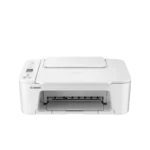Epoxy resins are versatile materials used in many projects. Quick or fast curing epoxies set much faster than regular types. These special epoxies can harden in as little as 5-30 minutes, compared to hours or days for standard formulas.
Fast curing epoxies offer benefits for time-sensitive tasks. They allow repairs to be completed quickly. This helps when bonding items that can’t be clamped for long periods. The trade-off is a shorter working time to mix and apply the epoxy before it starts to set.
Temperature plays a big role in epoxy curing speed. Warmer conditions speed up the chemical reaction that hardens epoxy. Some fast-cure products even generate heat as they set. This self-warming effect helps them cure even faster, especially in cooler environments.

Understanding Quick-Curing Epoxies
When it comes to epoxies, “quick curing” or “fast curing” means that the epoxy will harden much faster than standard epoxies. This can be a big advantage for many projects. But it’s important to understand how these epoxies work and when they are most useful.
How Quick-Curing Epoxies Work
Epoxies are adhesives made of two parts: a resin and a hardener. When these two parts are mixed together, a chemical reaction starts that causes the epoxy to harden. Quick-curing epoxies are formulated to speed up this chemical reaction. This is often done by adding different types of hardeners or by changing the chemical composition of the resin.
The Benefits of Quick-Curing Epoxies
Fast curing epoxies offer several benefits:
- Faster Project Completion: You can move on to the next step in your project sooner, without waiting hours for the epoxy to cure.
- Reduced Clamping Time: If your project requires clamping, you won’t need to hold the pieces together for as long.
- Ideal for Quick Repairs: Perfect for those urgent fixes where you need a strong bond quickly.
- Good for Vertical Surfaces: The fast curing time prevents the epoxy from dripping or sagging before it hardens.
Common Applications
Quick-curing epoxies are used in a wide range of applications:
- Household Repairs: Fixing broken furniture, toys, or other items around the house.
- Automotive Repairs: Bonding small parts or making quick repairs on cars and motorcycles.
- Crafts and Hobbies: Creating jewelry, models, and other crafts.
- Construction and Industrial Use: For tasks that require a fast-setting adhesive, like anchoring bolts or filling gaps.
Important Considerations
While quick-curing epoxies are very useful, there are a few things to keep in mind:
- Shorter Working Time: You’ll have less time to mix and apply the epoxy before it starts to harden.
- Pot Life: The “pot life” refers to the amount of time the epoxy remains workable after mixing. Quick-curing epoxies have a shorter pot life.
- Heat Generation: The faster curing process can generate more heat, which could be a concern for certain materials or applications.
Quick-Curing vs. Standard Epoxies
| Feature | Quick-Curing Epoxy | Standard Epoxy |
|---|---|---|
| Curing Time | Minutes to hours | Hours to days |
| Working Time | Shorter | Longer |
| Pot Life | Shorter | Longer |
| Strength | Can be very strong | Very strong |
| Applications | Quick repairs, vertical surfaces | General purpose bonding, large projects |
If you need an adhesive that sets quickly and provides a strong bond, a quick-curing epoxy might be the perfect solution for your project. Just be sure to choose the right type of epoxy for your specific needs and follow the manufacturer’s instructions carefully.
Key Takeaways
- Fast-curing epoxies harden in minutes instead of hours
- Quick-set formulas trade longer working time for faster curing
- Temperature greatly affects epoxy curing speed
Fundamentals of Epoxy and Curing
Epoxy is a versatile material used in many applications. Its curing process involves chemical reactions that transform it from a liquid to a solid state.
Chemistry of Epoxy Resins
Epoxy resins are a type of thermosetting polymer. They have a unique molecular structure with epoxide groups. These groups are rings made of two carbon atoms and one oxygen atom. When mixed with a hardener, the epoxide groups open up and form new bonds.
This bonding process creates a 3D network of molecules. The network gives epoxy its strength and durability. Epoxy resins come in different types, each with specific properties. Some are more flexible, while others are extra strong or heat-resistant.
Curing Process of Epoxy Resin
The curing process starts when epoxy resin mixes with a hardener. At first, the mixture stays liquid. This allows time for shaping or applying the epoxy. As the chemical reaction continues, the epoxy turns into a gel. Finally, it becomes solid.
Heat plays a big role in curing. As epoxy cures, it creates heat. This heat speeds up the curing process. In some cases, extra heat is added to make curing faster. The temperature during curing affects the final properties of the epoxy.
Curing time varies based on the type of epoxy and conditions. It can take hours or even days for full curing.
Roles of Hardeners and Resins
Hardeners and resins work together to create the final epoxy product. The resin provides the base material. It contains the epoxide groups that form new bonds. The hardener starts and controls the curing process.
Different hardeners produce different results. Some make the epoxy cure faster. Others change how strong or flexible the final product is. The ratio of resin to hardener is crucial. Using the wrong amount can lead to problems like soft spots or brittleness.
Choosing the right hardener depends on the job. Factors include desired cure time, working temperature, and final product properties.
What Fast Curing Entails
Fast curing epoxies set and harden much quicker than standard formulations. This rapid process impacts working time, strength development, and application methods.
Curing Time Versus Pot Life
Curing time refers to how long epoxy takes to fully harden. Pot life is the usable time after mixing. Fast-curing epoxies have short pot lives, often 20 minutes or less. They reach full strength in about 30 minutes to a few hours.
Standard epoxies may take 24 hours or more to cure fully. Fast versions speed this up greatly. This quick set allows for faster project completion.
Shorter pot life means less working time. Users must mix and apply fast-curing epoxy quickly before it starts to harden.
Temperature’s Impact on Curing Speed
Heat speeds up epoxy curing. Higher temperatures make fast epoxies cure even faster. This can be good or bad, depending on the project needs.
In cold weather, fast epoxies may still cure quicker than regular types. But the process slows down compared to warm conditions.
Some fast epoxies are designed to work well in cold temps. Others need warmth to cure properly. Always check the product specs for temperature ranges.
Factors Affecting Epoxy Curing Rates
Mix ratio is crucial for proper curing. Using too much or too little hardener changes how fast epoxy sets. Always follow the maker’s instructions.
Humidity can slow down or speed up curing. High moisture may cause issues with some fast epoxies.
Thickness of the epoxy layer impacts cure time. Thin layers often set faster than thick ones.
Some fast epoxies use special additives to speed up the chemical reaction. These help achieve quick curing even in less-than-ideal conditions.
Practical Considerations in Quick Curing
Quick-curing epoxies offer many benefits, but they also require careful handling. Users must balance working time with curing speed and avoid potential issues.
Optimizing Working Time and Curing Time
Quick-cure epoxies have short working times. This means less time to mix and apply the product. Users need to work fast and efficiently.
Temperature affects curing speed. Higher temps speed up the process. Lower temps slow it down. Some epoxies cure in just 45 seconds at 135°C.
To extend working time:
- Keep materials cool before mixing
- Mix smaller batches
- Use a slower hardener
For faster curing:
- Use supplemental heat
- Choose a faster hardener
- Increase the mixing ratio of hardener
Avoiding Common Issues with Fast Curing
Fast-curing epoxies can cause problems if not used correctly. Here are some issues to watch out for:
Incomplete mixing: Rush mixing can leave unmixed parts. This leads to weak bonds.
Air bubbles: Fast curing traps air bubbles. These weaken the final product.
Uneven curing: Thick sections may cure differently than thin ones. This can cause stress in the material.
Shrinkage: Quick curing can lead to more shrinkage. This may affect the final shape or fit.
To avoid these issues:
- Mix thoroughly but quickly
- Use degassing techniques
- Apply in thin, even layers
- Allow for proper heat distribution
Applications of Quick or Fast Curing Epoxies
Fast-curing epoxies are useful in many fields. They shine where speed is key.
In manufacturing, they cut production times. Assembly lines use them to bond parts quickly. This boosts output and cuts costs.
The auto industry uses them for quick repairs. Body shops can fix dents and chips fast. This gets cars back on the road sooner.
Electronics makers use them too. They secure parts in devices. The quick cure lets them move products along faster.
Other uses include:
- Rapid prototyping
- Emergency repairs
- High-volume production
- Time-sensitive projects
Fast-cure epoxies come in many forms. Some are best for coating. Others work well for bonding. The right choice depends on the job at hand.







